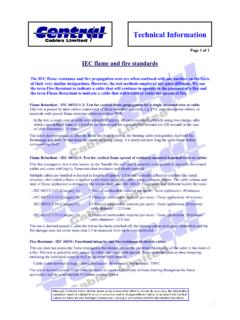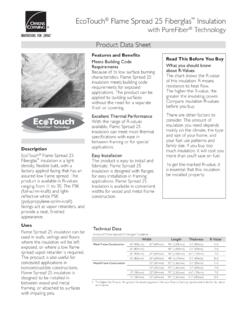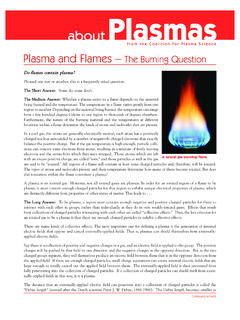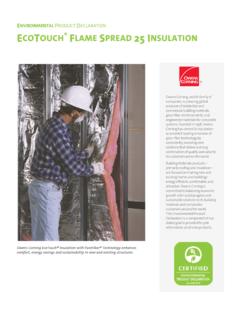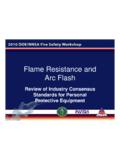Transcription of IEC flame and fire standards - Home - Central …
1 Technical Information Page 1 of 1 IEC flame and fire standards The IEC flame resistance and fire propagation tests are often confused with one another on the basis of their very similar designations. However, the test methods employed are quite different. We use the term fire Resistant to indicate a cable that will continue to operate in the presence of a fire and the term flame Retardant to indicate a cable that will inhibit or resist the spread of fire . flame Retardant - IEC 60332-1-2: Test for vertical flame propagation for a single insulated wire or cable This test is passed by most cables constructed of flame -retardant materials, PVC and chloroprene rubber, or materials with special flame -retardant additives such as PUR. - In the test, a single core or cable with a length of approx. 60 cm is mounted vertically using two clamps, after which a pre-defined flame is applied to the bottom end for a period of 60 seconds (or 120 seconds in the case of cable diameters > 25 mm).
2 The test is deemed passed if, after the flame has been removed, the burning cable extinguishes itself and the firedamage is at least 50 mm from the upper mounting clamp. It is irrelevant how long the cable burns before extinguishing itself. flame Retardant - IEC 60332-3: Test for vertical flame spread of vertically-mounted bunched wires or cables This fire propagation test is also known as the "bundle fire test" and is generally only passed by specially developed cables and wires with highly flame -retardant insulation and sheath material. Multiple cables are bundled or layered in lengths of approx. m and vertically affixed to a ladder-like metal structure, after which a flame is applied to the lower end of the cables using a propane burner. The cable volume and time of flame application is defined by the test method, since IEC 60332-3 comprises four different bundle fire tests: - IEC 60332-3-22 (Category A) 7 litres of combustible material per metre / flame application: 40 minutes - IEC 60332-3-23 (Category B) litres of combustible material per metre / flame application: 40 minutes - IEC 60332-3-24 (Category C) litres of combustible material per metre / flame application: 20 minutes / cable diameter > mm - IEC 60332-3-25 (Category D) litres of combustible material per metre / flame application: 20 minutes / cable diameter< mm The test is deemed passed if, after the burner has been switched off, the burning cables extinguish themselves and the fire damage does not cover more than m measured from the bottom cable end.
3 fire Resistant - IEC 60331: Functional integrity and fire resistance of electric cables This test does not assess the flame propagation but instead checks the electrical functioning of the cable in the event of a fire . This test is generally only passed by cables and wires with special, flame -retardant glass or mica wrapping enclosing the individual cores as well as the entire cable bundle. - Cable under nominal voltage / flame application: 90 minutes / Temperature: 750 C The test is deemed passed, if the cable continues to conduct electricity without shorting throughout the flame application and for a subsequent 15 minute cooling period. UN
